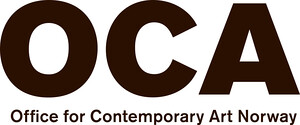April 12–June 3, 2018
OCA is proud to announce the opening of the exhibition Let the River Flow. The Sovereign Will and the Making of a New Worldliness on Wednesday, April 11, 2018 at 6pm.
The People’s Action against the Áltá-Guovdageaidnu Waterway (c. 1978–82) radically shook the course of history in the Nordic region. Its call to “let the river live” was launched against the construction of a large dam across the legendary Álttáeatnu (Áltá river) in Sápmi/Northern Norway. It grew from an unexpectedly broad movement of solidarity across civil society—Sámi, Norwegian and international—in which Sámi artists played a crucial role.
The Áltá action was a reaction to the profound impact on Sámi communities—their livelihoods, their cultural heritage, and as environmental protectors—of the flooding by the dam of large areas of Sápmi. The resistance movement was as unprecedented within the history of social protest in Europe, as was its dramatic climax—the Sámi hunger strikes in Oslo in 1979. Moreover the Áltá action was part of a new environmental consciousness of the 1970s, as well as the emerging histories of Indigenous empowerment of the time.
Today the action elicits bitter-sweet memories. Some historians have claimed that in catalysing Norway’s signature of the United Nations’ ILO Convention 169 and the creation of a Sámi Parliament, Kárášjohka, in 1989, the action announced a new era of Nordic de-colonisation. One that potentially placed Norway at the forefront of social justice policy-making worldwide. Yet a new generation of Sámi artists and thinkers claim that this process stalled early on coinciding with the rise of a new economy in Norway, and that the very survival of Sámi culture, land, livelihood and worldviews is in serious danger today. Their voices are being heard in the most prestigious cultural arenas internationally, and play an essential role within the powerful Indigenous movements spreading across the world today—artistically, ecologically and politically.
Let the River Flow is the fruit of three years of dialogue with artists, scholars, and peoples across Sápmi (whose land traverses four nation-states: Norway, Sweden, Finland and Russia). The exhibition showcases the essential role of Sámi artists in the action, in particular the seminal Mázejoavku: Sámi Dáiddajoavku (Sámi Artists’ Group, 1978-83), as well as the solidarity of non-Sámi counterparts. It presents rare historic works sidelined from the Nordic art historical canon, a small number of duodji, as well as material from the The archives of the protest movement against the damming of the Áltá-Guovdageaidnu water system, and new contemporary commissions that explore the legacy of Áltá today. Let the River Flow simultaneously claims and challenges the place of Sámi art amongst the new global, modernist, museologies dedicated to expand the canon of art history to a world-scale.
Let the River Flow is curated by Katya García-Antón, with Antonio Cataldo. The project has been honoured by the guidance of an Advisory Council consisting of Sámi scholars, Prof. Harald Gaski and Dr. Gunvor Guttorm. The exhibition design is the result of discussions between the curatorial team and a Sámi-Norwegian collaboration of the architects A-Lab (Káre R. Anti) and Torsteinsen Design.
Artworks, performances and lectures will be presented by: Nabil Ahmed, Áillohaš/Nils-Aslak Valkeapää, Maria Thereza Alves, Jon Ole Andersen, Jimmie Durham, Elle Márjá Eira, Mai-Lis Eira, Pauliina Feodoroff, Aage Gaup, Trygve Lund Guttormsen, Josef Halse, Geir Tore Holm and Søssa Jørgensen, Rose-Marie Huuva, Berit Marit Hætta, Susanne Hætta, Iver Jåks, Keviselie/Hans Ragnar Mathisen, Áine Mangaoang, Britta Marakatt-Labba, Joar Nango and Tanya Busse, Rannveig Persen, Synnøve Persen, Máret Ánne Sara, Arvid Sveen, Catarina Utsi, Elin Már Øyen Vister, amongst other contributors.
Click here to go to the artists’ biographies.
Click here for lectures, performances and events.
For more information, please contact OCA’s Communication Manager Tara Hassel.
About previous OCA projects in the series
Let the River Flow. The Sovereign Will and the Making of a New Worldliness is a highlight of OCA’s long-term programme “Thinking at the Edge of the World. Perspectives from the North.” Initiated in 2015 “Thinking at the Edge of the World” is a broad cross-disciplinary project exploring the cultural history of Sápmi/Northern Norway, curated by the Office for Contemporary Art Norway (OCA) in collaboration with local institutions and artistic peers. The programme has inspired OCA to embark on a process of decolonisation of its working practices and institutional structures, addressing three vital areas: Personnel, Programmes and Publics.
“Thinking at the Edge of the World” has been structured through a series of regional and international dialogues and partnerships, the project unfolded in various forms and locations across Norway and beyond, including research, artists’ residencies, exhibitions, text commissions and a number of activities. It was implemented through a newly created OCA pilot office in Tromsø, as well as its premises in Oslo. Highlights included the cross-disciplinary international conference on Svalbard in June 2016; a symposium dedicated to Sámi art and activism, held in the Sámi Parliament in Kárásjohka (Karasjok) in August 2016, and including the launch of documenta 14’s South as a State of Mind, following which eight Sámi artists were invited to participate in documenta 14 in Athens and Kassel in 2017, namely three of the eight founding members of the Sámi Artist Group, Synnøve Persen, Keviselie/Hans Ragnar Mathisen and Britta Marakatt-Labba, as well as Niillas Somby, Iver Jåks, Mette Henriette, Máret Ánne Sara and Joar Nango.
Honouring the 100th Sámi Jubilee in Tråante (Trondheim) in 2017, OCA’s year’s programme was primarily dedicated to Indigenous art and thought. In so doing it marked a continuous commitment to urgent, contemporary indigenous issues of global importance. Highlights included “Museums on Fire!,” a symposium exploring the challenge to modernist museologies by the Indigenous Turn, held within a specially created installation by Sámi artist Anders Sunna (April–June); and the three-day gathering in Máze (Masi), under the stewardship of the Sámediggi (Sámi Parliament), to relaunch the legendary Mázejoavku housing and studios as a future Indigenous residency (September).


